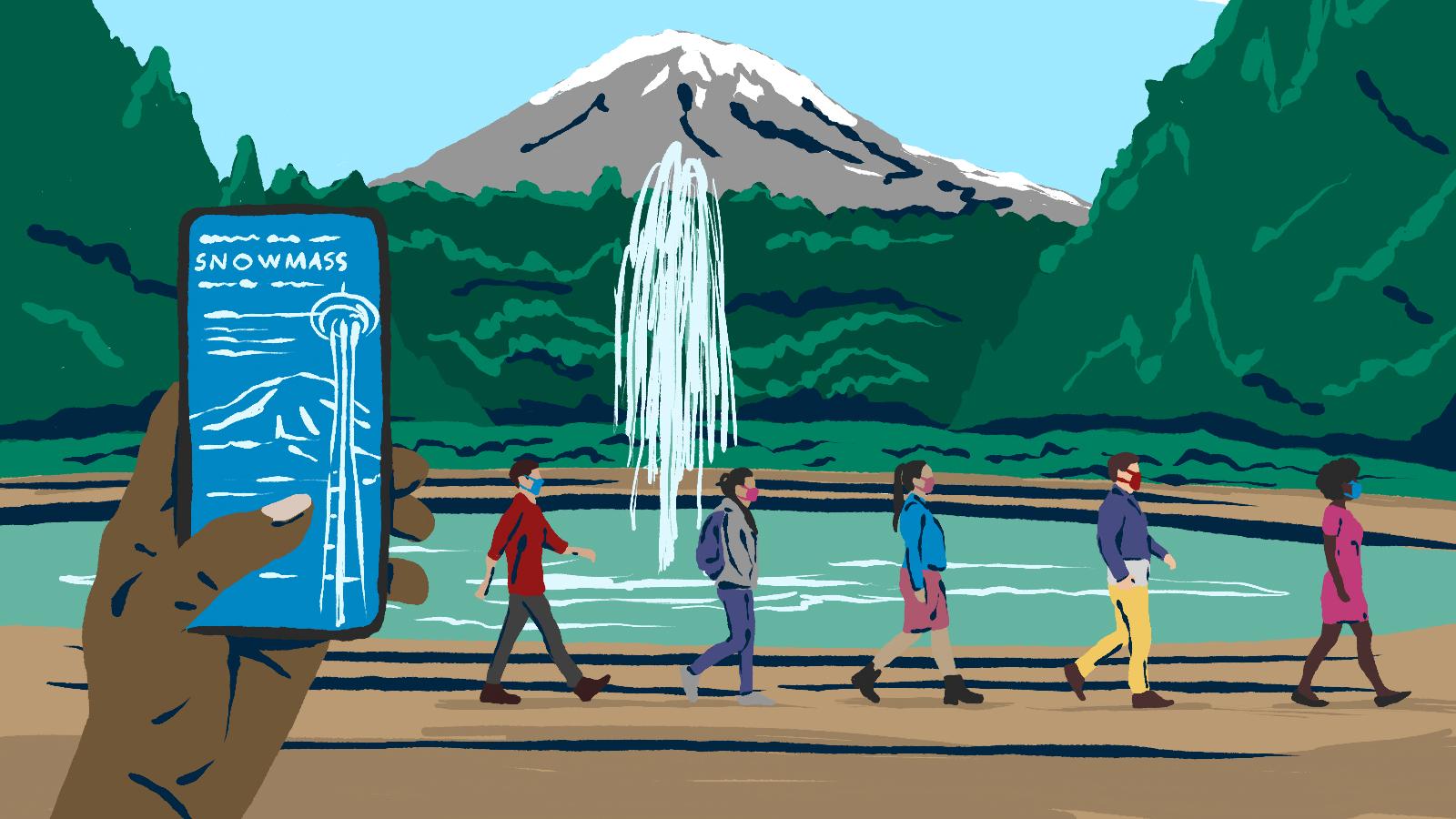From July 17-26, physicists will gather at the University of Washington, Seattle for the final major meeting of the Snowmass community planning process. Every five to 10 years or so, physicists use Snowmass to develop ideas and proposals that will inform the process that the Department of Energy uses to set large- and medium-scale project priorities for the future of US particle physics.
The Summer Study workshop will be a last chance for scientists to refine the arguments and explanations that they developed over the last two years for the Snowmass Report. In the fall, Snowmass organizers will present the report to members of the Particle Physics Project Prioritization Panel, also known as P5. P5 is a subpanel of the High-Energy Physics Advisory Panel, HEPAP, which is a Federal Advisory Committee that gives HEP program advice to the Department of Energy and the National Science Foundation.

The Snowmass process is community-led, organized by elected members of the American Physical Society’s Division of Particles and Fields. It is named after a town in Colorado where particle physicists held their first community meeting to discuss plans for the future in the summer of 1982.
The previous Snowmass process and the resulting P5 report, published in May 2014, paved the way for several large, international projects, such as upgrades to the CMS and ATLAS experiments at the Large Hadron Collider, as well as the construction of the Long-Baseline Neutrino Facility, the Deep Underground Neutrino Experiment and related PIP-II enhancement to the Fermilab accelerator complex; the Muon g-2 and Mu2e muon experiments; the Vera C. Rubin Observatory and its LSST Camera; the Dark Energy Spectroscopic Instrument; three dark-matter detectors—SuperCDMS, LZ and ADMX-Gen2—and the CMB-S4 Cosmic Microwave Background experiment.
With those projects underway, the current Snowmass process looks ahead to what should come next.
The current Snowmass process kicked off in April 2020, just after the beginning of the COVID-19 pandemic. Snowmass organizers paused or slowed down some activities to enable participants, especially younger scientists, to address complications caused by the pandemic, and pushed the Summer Study workshop, originally scheduled for 2021, back by a year. That makes this the longest Snowmass process yet, stretching across the tenures of three different DPF Chairs.
It has also been the most virtual Snowmass process yet, says current DPF Chair Joel Butler of the US Department of Energy’s Fermi National Accelerator Laboratory. “I think the capability of quickly putting together virtual meetings made it possible to continue to make progress and maintain coherence during the period of more than a year when in-person meetings were unsafe,” he says.
Snowmass organizers are focused on 10 “frontiers”: the energy frontier; the neutrino physics frontier; the rare processes and precision frontier; the cosmic frontier; the theory frontier; the accelerator frontier; the instrumentation frontier; the computational frontier; the underground facilities frontier; and the community engagement frontier. The Summer Study workshop will be the first time each frontier will have a chance—in the form of an hour-and-a-half-long plenary session—to present their main conclusions to the entire community. “They’ll try to make their specific case so scientists who are not in that particular field can understand why it’s important,” Butler says. “That’s going to be the biggest part of what we do—talk to each other to find a common understanding of what the future should look like.”
“It’s a lot of work. It’s very, very intense. It’s very involved. It’s a lot of thinking, talking through things.”
Other regional planning processes—such as the European Strategy for Particle Physics, which was updated in 2020—will influence the Snowmass report. In addition, physicists at the Summer Study will hear presentations on two studies that are just beginning: the National Academies’ 18-month Decadal Study of Elementary Particle Physics and an International Benchmarking study initiated by HEPAP.
The ultimate audience of the Snowmass Report is the P5 subpanel. The last subpanel consisted of 25 scientists. The chair of the new P5 subpanel, who has not yet been named, will work with the chair of HEPAP, JoAnne Hewett of SLAC National Accelerator Laboratory, to suggest a list of potential P5 members, who must be approved by the funding agencies.
Once the P5 panelists receive the Snowmass report, they will seek additional input from the community, likely calling for presentations on suggested projects and making sure that they have the latest cost estimates, schedules and technical details, as well as projected funding levels and profiles from the DOE and NSF. P5 members will then deliberate for several months and in spring 2023 will present to funding agencies a unified vision for the future of US particle physics.
“It’s a lot of work,” says Hewett, who served as a member of the last P5. “It’s very, very intense. It’s very involved. It’s a lot of thinking, talking through things. It takes time to go through each and every one of the projects and give them their due consideration.”
The last time, the effort proved worthwhile, Butler says. The Snowmass process and P5 report were “a very positive element, something the community could point to,” he says. “Even though there were differences of opinion on some of the details, overall our US scientists thought it was a good plan that they could support.”
After P5 made their recommendations in 2014, the Division of Particles and Fields managed to quickly gather 2,331 signatures on a physics community letter of support. “That had a huge impact,” Hewett says. “That really made an impression.”







